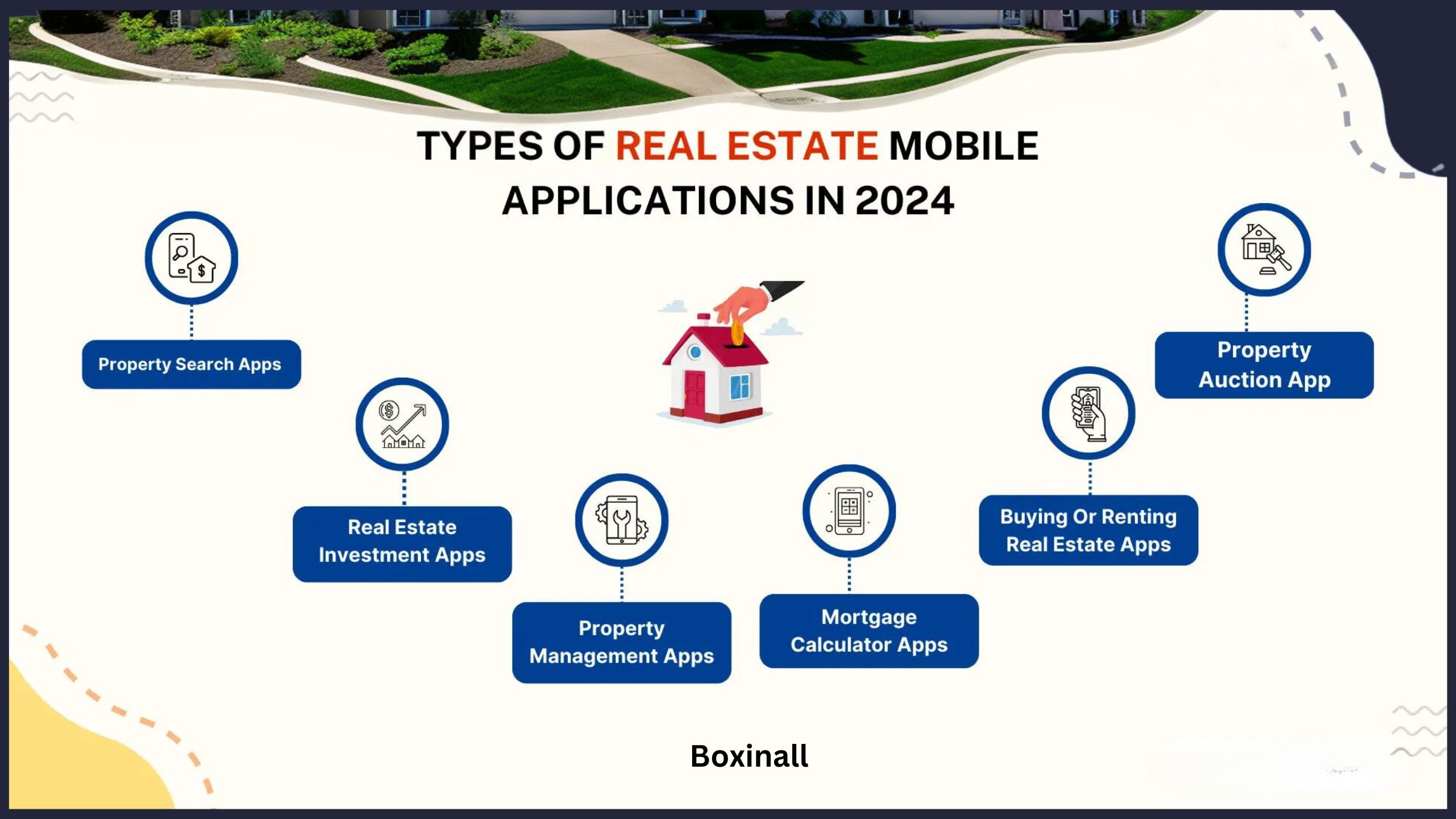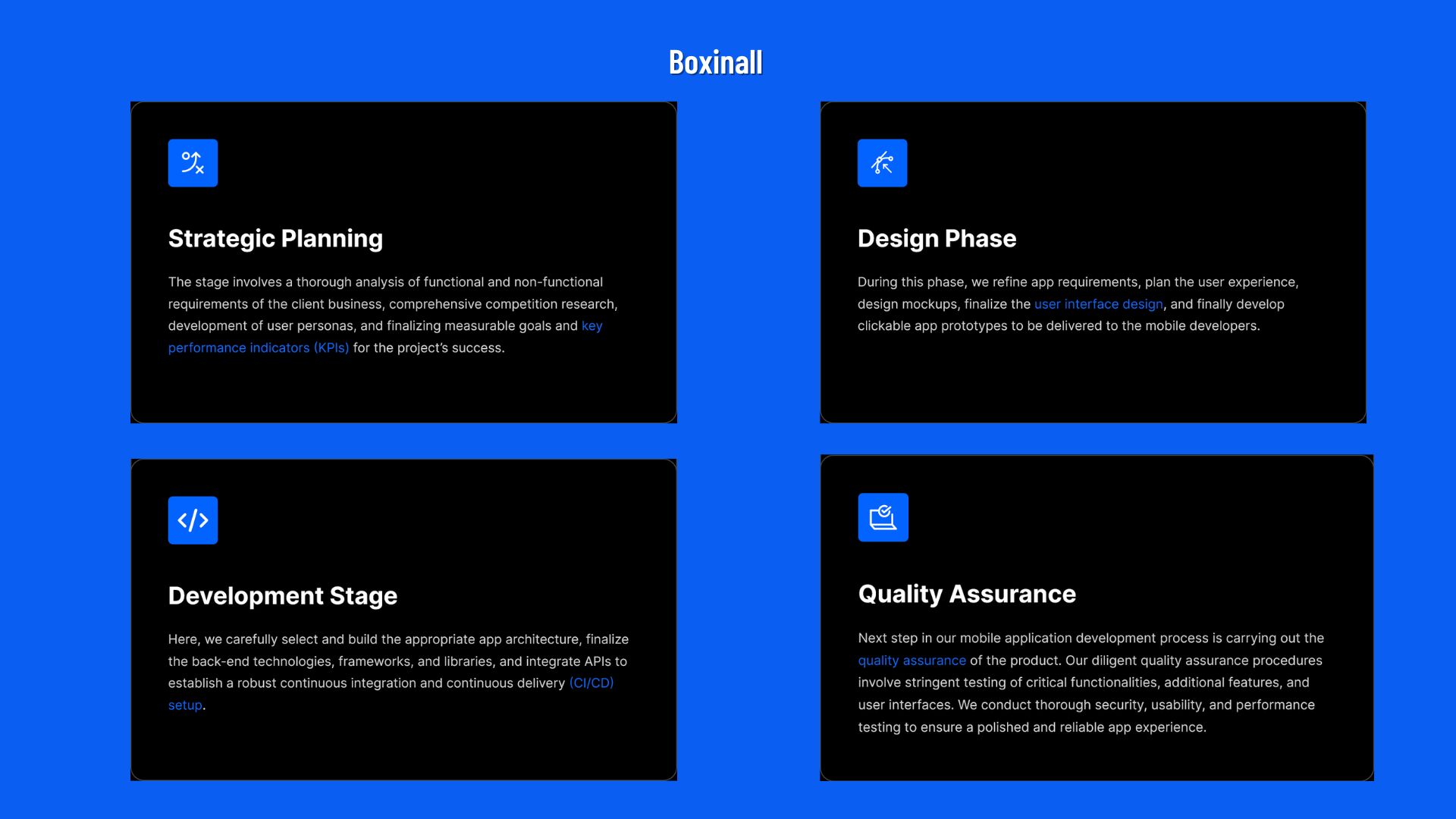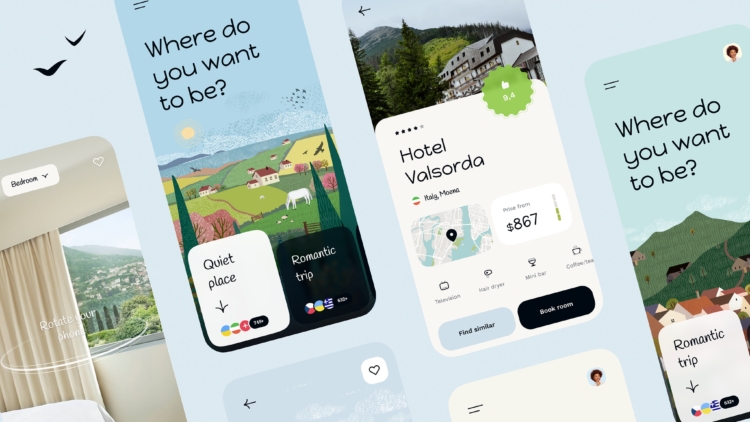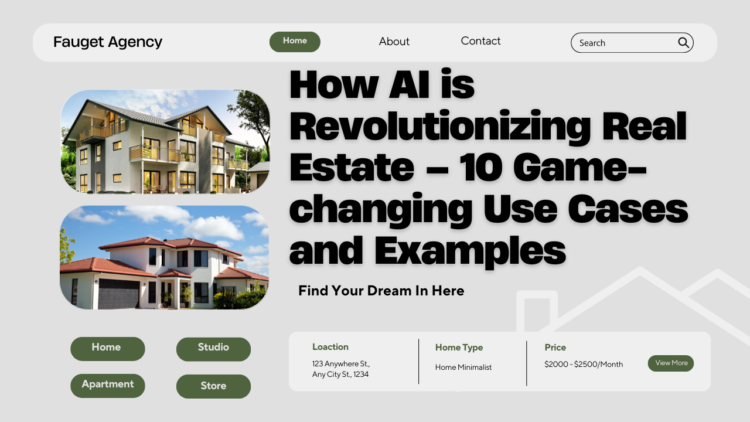In an era where digital transformation is reshaping industries, real estate app development stands out as a pivotal tool for innovation and growth within the real estate sector. As more real estate transactions move online, the demand for comprehensive, user-friendly property management apps and mobile app development for real estate has surged. This rise signifies not only a shift in how properties are bought, sold, and managed but also highlights the importance of partnering with a top mobile app development company. By leveraging cutting-edge technology, businesses can significantly enhance customer experiences, streamline operations, and open new revenue streams, establishing a formidable presence in the digital real estate marketplace.
This article delves into the key facets of real estate app development, from understanding the mobile app market specific to real estate to calculating the real estate app development cost.
Readers will gain insights into defining their app’s purpose and target audience, crucial elements that guarantee a successful build a real estate app project. Moreover, it will explore the essential features, the right technology stack, and the design principles of a user-friendly app interface.
Further, the pathway to developing your real estate mobile app will be articulated, alongside effective monetization strategies and marketing techniques to ensure your app’s success post-launch. Whether you aim to collaborate with Boxinall Softech or another top mobile app development company, this guide promises a comprehensive overview to navigate the complexities of launching a successful real estate application in the ever-evolving digital landscape.
Understanding the Real Estate Mobile App Market

Analyzing Current Trends
The real estate mobile app market in the USA is currently characterized by several innovative trends. Virtual reality tours, AI-driven recommendations, and personalized user experiences are at the forefront, catering to a growing demand for convenience, accessibility, and customization. These trends are transforming the way properties are viewed and transactions are conducted, providing users with immersive and tailored experiences.
- The Real Estate market market worldwide is expected to reach a staggering value of US$637.80tn by 2024.
- Among the various segments, Residential Real Estate dominates the market with a projected market volume of US$518.90tn in the same year.
- Looking ahead, the sector is anticipated to grow at an annual rate of 3.41% (CAGR 2024-2028), resulting in a market volume of US$729.40tn by 2028.
- In a global context, it is worth noting that China is set to generate the highest value in the Real Estate market market, with an impressive US$135.70tn projected for 2024.
- In the United States, the real estate market is experiencing a surge in demand for suburban properties due to the increasing number of people working remotely.
Identifying Consumer Needs
To effectively meet consumer expectations, it’s crucial to understand their evolving needs and preferences. Real estate mobile apps that offer advanced search options, interactive maps, and real-time notifications significantly enhance the user experience. These features allow users to navigate the app effortlessly, making the process of finding the right property as seamless as possible.
Researching Competition
A thorough analysis of existing real estate apps can reveal valuable insights into market gaps and competitor strategies. This research is vital for understanding what competitors are offering and how they are engaging with their audience. By identifying these factors, developers can tailor their apps to better meet market demands and stand out in a competitive landscape.
Conducting a competitive analysis involves profiling current competitors, analyzing market trends, and evaluating the web presence and unique value offerings of other apps in the market. This process helps developers understand the strengths and weaknesses of their competitors, enabling them to craft strategies that leverage their unique selling points and capture a larger share of the market.

Defining Your App’s Purpose and Target Audience
Setting Clear Objectives
Before initiating the development process, it is crucial to define the purpose of the real estate app. This involves determining whether the app will focus on property search, mortgage calculations, investment analysis, or a combination of these functions. Establishing clear objectives early on helps guide the development process, ensuring that every feature introduced aligns with the app’s intended goals. For instance, if the objective is to streamline the property buying experience, features like real-time listings and seamless agent-client interactions should be prioritized. By setting specific goals, developers can measure the app’s success and make informed decisions throughout the development process.
Identifying Core Functionalities
Once the objectives are set, outlining the core features of the app becomes the next step. Essential functionalities might include property listings, advanced search filters, high-quality images, map integration, mortgage calculators, and user profiles. These features should cater to the needs of the target users, enhancing their experience by making property search and management more efficient and user-friendly. For example, incorporating advanced search filters can help users find properties that meet specific criteria such as location, price range, and property type, thereby facilitating a more tailored search experience.
Understanding Your Target Users
Identifying and understanding the target audience is pivotal for tailoring the app’s functionalities to meet their specific needs. This involves analyzing demographic and psychographic characteristics such as age, gender, income, education level, and location. Additionally, understanding the pain points and preferences of the target audience can significantly influence the app’s design and functionality. For instance, if the target users are first-time homebuyers, the app might include detailed guides on the home-buying process and financial calculators to assist with mortgage planning. Engaging with the target audience to gather feedback can also provide valuable insights into further refining the app and aligning it more closely with user expectations.
Each of these steps contributes to building a real estate mobile app that not only meets the market demand but also provides a unique value that sets it apart from competitors. By focusing on well-defined objectives, core functionalities, and a deep understanding of the target users, developers can create a product that resonates well with the intended audience and succeeds in the competitive market.
Essential Features of a Successful Real Estate Mobile App
User Registration and Profiles
For a real estate mobile app to function effectively, user registration is a fundamental feature. It allows users to sign up or log in, enabling them to book, buy, or sell real estate. A standard registration process typically requires the user’s name, email, and password, while also offering the option to log in using social network accounts like Facebook, Google, or Twitter. Additionally, personal profiles are crucial as they cater to different user roles such as buyers, real estate agents, or renters, each requiring access to specific functionalities. For instance, agents need access to their properties, appointments, and profiles of potential buyers, while buyers and renters benefit from features like a list of favorite properties and advanced search filters.
Property Listings and Database
At the heart of any successful real estate app is an extensive database of property listings. It is essential to integrate advanced filters that allow users to search properties based on various criteria such as location, price range, and property type. Ensuring that the listings are up-to-date and accurate reflects the dynamic nature of the real estate market. Moreover, listings should contain comprehensive details about the properties, including high-quality images, videos, and floor plans, to aid users in making informed decisions.
Advanced Search and Filters
Advanced search and filtering mechanisms are vital for enhancing user experience by facilitating the search for the perfect property. These features should include numerous categories and filters such as number of rooms, type of home, amenities, and specific dates. For real estate apps focused on buying and selling, additional filters might include home size, lot size, and community amenities, helping users to pinpoint their ideal property options.
Interactive Maps and Property Details
Interactive maps play a crucial role in real estate apps by displaying property locations and providing data about the neighborhood, infrastructure, and transportation. This feature not only helps users visualize the property’s surroundings but also includes functionality like street view and customizable map layers for a more immersive experience. Detailed property information should be readily available, including descriptions that highlight unique features and selling points of each listing.
By incorporating these essential features, a real estate mobile app can significantly improve the property search and management experience, making it efficient and user-friendly for different types of users.
Choosing the Right Technology Stack
Deciding on Platforms (iOS, Android, or Both)
When selecting the appropriate platforms for real estate app development, developers must consider the global market share and specific user needs. Android holds a significant portion of the global smartphone market at about 54 percent, making it an essential platform for real estate apps, especially if targeting international clients. On the other hand, iOS is preferred by over 50 percent of smartphone users in the United States and is renowned for its high-quality app offerings and seamless user experience. Therefore, deciding whether to develop on iOS, Android, or both platforms should be based on the geographical and demographic targeting of the app.
Selecting Frameworks and Tools
For developers aiming to support both iOS and Android, cross-platform development frameworks like React Native or Flutter can be advantageous. These frameworks allow for a single codebase to be used across both platforms, which can significantly reduce development time and costs. Additionally, integrating advanced technologies such as Augmented Reality (AR) and Virtual Reality (VR) can enhance the functionality of real estate apps, providing immersive property tours and interactive experiences.
Considering Scalability and Security
It is crucial to choose a technology stack that not only meets the current needs but also supports future growth and expansion. Scalability should be a core consideration, ensuring that the app can handle increasing loads and data as it grows. Security is another critical aspect, particularly for real estate apps that handle sensitive user data and financial transactions. Developers should implement robust security measures, including data encryption and secure APIs, to protect user information and build trust.
By carefully selecting the right technology stack, real estate app developers can create powerful, efficient, and secure applications that stand out in the competitive market. This strategic choice impacts not only the performance and reliability of the app but also its ability to scale and adapt to future enhancements.
Designing a User-Friendly App Interface
Prioritizing Simplicity and Navigation
Clarity and simplicity are foundational in real estate UI/UX design, where the objective is to minimize complexity and remove unnecessary elements, thereby enhancing usability and user satisfaction. Intuitive navigation is crucial, allowing users to effortlessly search for information and perform necessary actions without confusion or frustration. This involves organizing content logically and providing clear pathways to essential features such as property listings and advanced search filters. To reduce cognitive load and improve overall app usability, information should be presented in a clear and organized manner, enabling users to comprehend property details and perform desired functions effortlessly.
Incorporating Visuals that Stand Out
Visual appeal plays a significant role in user engagement within real estate apps. High-quality images, immersive virtual tours, and interactive maps are essential for showcasing properties effectively and enhancing user interaction. The use of professional photos, captivating virtual tours, and detailed property information helps in forming a positive first impression and fosters an emotional connection with potential buyers. Moreover, incorporating responsive design elements like media queries and fluid grids ensures that visuals are optimized across different devices, contributing to a seamless and engaging user experience.
Ensuring Responsiveness Across Devices
Responsive design is critical in today’s multi-device environment. It ensures that the real estate app provides an optimal experience across various devices, including smartphones, tablets, and desktops. By employing flexible layouts and adaptive images, the app can maintain consistency and functionality, regardless of the device used. This not only improves accessibility but also enhances user satisfaction by allowing seamless transitions between devices and ensuring that all users, regardless of their device preference, can access and navigate the app with ease. Moreover, responsive design supports better SEO outcomes, as mobile-friendly apps are favored by search engines, potentially increasing the app’s visibility and reach.
Developing Your Real Estate Mobile App
Hiring the Right Team
For real estate app development, assembling an elite team of developers and quality assurance (QA) testers is crucial. These professionals should be adept in navigating the complexities of the app’s functionality and user interface, ensuring any issues are addressed early in the development process. It is essential to involve a range of experts from business analysts to developers and testers to enhance the navigation and functionality of the app. This collaborative effort helps in early identification and fixing of any code or user experience issues, setting the stage for a robust digital real estate solution.
Implementing Agile Development Practices
Agile development practices are highly recommended for real estate app development due to their iterative and incremental nature. This approach allows for frequent updates and the ability to adapt quickly to user feedback and changing market demands. By employing agile methodologies, real estate apps can be developed in shorter cycles known as sprints, which enhances the efficiency and responsiveness of the development process. Agile practices encourage continuous improvement and involve the client and end-users in the development process, ensuring that the final product closely aligns with user expectations and market needs.

Rigorous Testing and Bug Fixing
Rigorous testing is a critical phase in the development of real estate mobile apps. Implementing automated testing tools and involving users in beta testing programs are effective strategies for identifying and addressing potential issues early. Quality assurance teams play a pivotal role by building test cases, analyzing the app for errors, and fixing bugs to ensure the app performs well under various conditions. Regular updates and maintenance are also crucial to rectify any bugs and enhance the app’s performance based on user feedback. Engaging experts like BugRaptors can provide additional support in real estate app testing, ensuring that the app meets all operational and customer service goals effectively.
By focusing on these key areas during the development process, real estate companies can create powerful and user-friendly mobile apps that stand out in the competitive market.
Monetization Strategies for Your App
Integrated Advertisements
In the realm of real estate app development, integrating advertisements is a robust strategy to generate revenue. Real estate apps offer excellent opportunities for targeted advertising from mortgage lenders, home service companies, or furniture retailers. By offering ad space, developers can create a significant source of income without compromising the user experience, ensuring that ads are strategically placed to be effective yet non-intrusive.
Freemium Features and Subscriptions
The freemium model allows users to access basic features of the app for free, while more advanced features can be unlocked through in-app purchases or subscriptions. This model not only attracts a larger user base by offering free services but also generates revenue from users willing to pay for enhanced functionalities. Subscription models, in particular, provide a steady income flow by offering users the option to upgrade for access to detailed analytics, comprehensive market trends, or personalized alerts for new listings.
Premium Feature Unlock Options
Offering premium listings and featured ads is another effective monetization strategy. Sellers and agents can pay to have their properties or services highlighted in prominent spots within the app, which can lead to quicker sales and higher visibility. Additionally, in-app purchases can include exclusive services like in-depth property valuations or booking appointments with top-rated agents, providing additional value to users and further revenue streams for the app developers.
Launching and Marketing Your App
Executing a Launch Plan
A successful real estate mobile app launch requires a strategic approach, starting with app store optimization to ensure the app is discoverable. Marketing campaigns, press releases, and promotional activities are essential to generate buzz and attract users. Developers should coordinate these efforts meticulously to maximize visibility and user acquisition from the outset.
Promotional Strategies and User Engagement
To increase the app’s visibility and attract more users, implementing various marketing strategies is vital. Social media marketing, email marketing, content marketing, and search engine optimization (SEO) are powerful tools for promoting the app. Additionally, partnerships with real estate agencies can further enhance the app’s reach and user base. Engaging potential users through high-quality images and walkthrough videos on social media channels can significantly boost interest and downloads. Storytelling about properties, highlighting their advantages and beautiful elements, can also captivate the audience’s attention. Paid advertising, including in-app advertising, search ad campaigns, and display and video advertising on platforms like Facebook, Instagram, and YouTube, can effectively reach the desired audience.
Gathering and Acting on User Feedback
After launching the real estate mobile app, collecting users’ feedback is crucial for understanding what features may need improvement or were missed during development. This feedback serves as a guide for future upgrades and scaling decisions. It’s advised not to start scaling until a solid user base is established, and the app has achieved stable cash flow and minimized risks. Treating customer feedback as a treasure map, developers should actively listen and analyze the data to identify patterns, recurring themes, and areas for improvement. Crafting an action plan based on this analysis and communicating changes to clients shows a commitment to top-notch service. Implementing client feedback effectively enhances the real estate business by informing future business strategies, shaping online content, and improving relationships. Feedback can also highlight areas for professional development, ensuring that improvements are consistently delivered.
By following these strategies for launching and marketing a real estate mobile app, developers can ensure a successful introduction to the market and sustained growth. Engaging promotional activities, strategic partnerships, and a responsive approach to user feedback are key components of a thriving real estate mobile app.
Conclusion
Through the exploration of essential topics such as market understanding, defining the app’s purpose and audience, designing user-friendly interfaces, and implementing agile development practices, this guide underscores the multifaceted approach required to launch a successful real estate mobile app in 2024. We delved into the significance of choosing the right technology stack and the impact of responsive design for a seamless user experience across various devices. Moreover, the discussions around monetization strategies offer a blueprint for generating sustainable revenue, while the strategies for launching and marketing provide a path for engaging users and gaining traction in a competitive landscape.
As the real estate sector continues to evolve, the insights shared in this article are instrumental in guiding developers and real estate professionals towards leveraging digital solutions effectively. In recognizing the complexities of real estate app development, it becomes clear that a collaborative approach, along with a keen eye on market demands and user needs, is essential. Should you be looking to venture into real estate app development or require consultation to refine your existing digital assets, do not hesitate to contact us. With the right resources and a strategic approach, your real estate app can not only meet but exceed the expectations of a digitally savvy clientele, setting a new benchmark in the industry.




